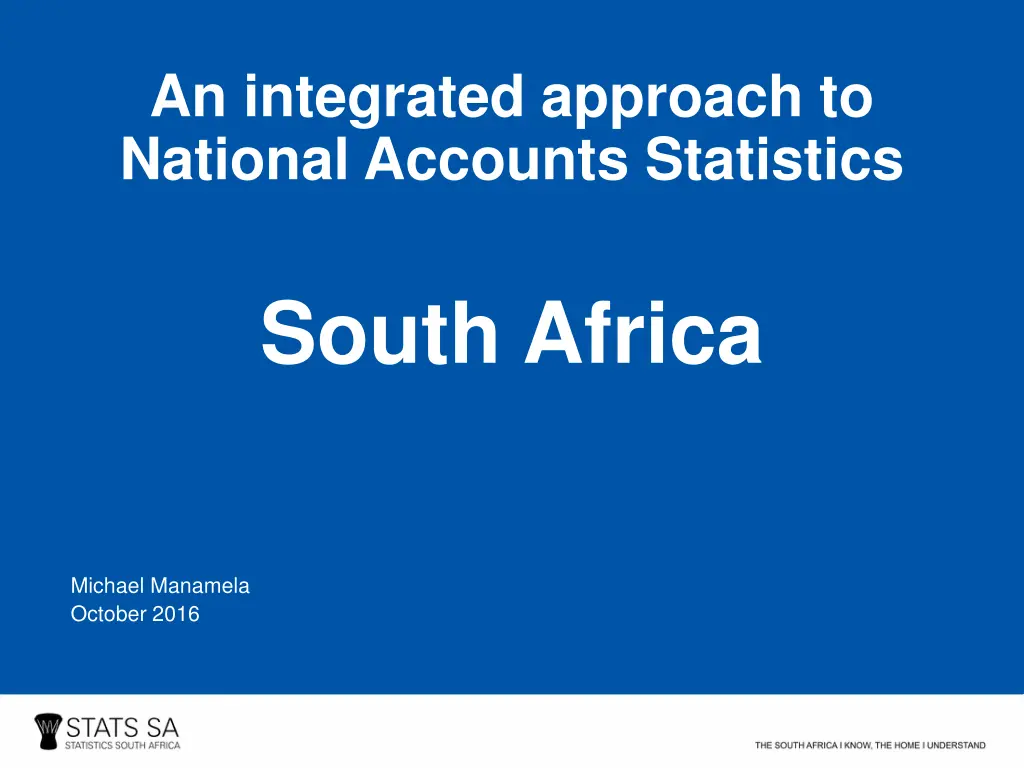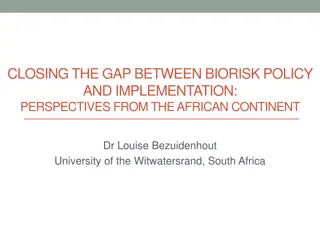
Integrated Approach to National Accounts Statistics in South Africa
Discover the integrated economic statistics and legislative framework shaping the national accounts system in South Africa. Explore the benefits of centralization, sampling frame building blocks, user interactions, and more in this comprehensive analysis by Michael Manamela in October 2016.
Uploaded on | 0 Views
Download Presentation

Please find below an Image/Link to download the presentation.
The content on the website is provided AS IS for your information and personal use only. It may not be sold, licensed, or shared on other websites without obtaining consent from the author. If you encounter any issues during the download, it is possible that the publisher has removed the file from their server.
You are allowed to download the files provided on this website for personal or commercial use, subject to the condition that they are used lawfully. All files are the property of their respective owners.
The content on the website is provided AS IS for your information and personal use only. It may not be sold, licensed, or shared on other websites without obtaining consent from the author.
E N D
Presentation Transcript
An integrated approach to National Accounts Statistics South Africa Michael Manamela October 2016
Levers of an integrated economic statistics Statistics Act Integrated business register
Legislative framework Professional independence Statistical Council Anchored on the fundamental principles of statistics
The statistical system in operation Legislative framework Mainly a centralised statistical system Recently assumed responsibility for expenditure based GDP) Benefits of centralisation outweigh that of a decentralised approach Centralisation provides improved and more efficient links between basic statistics and macroeconomic accounts Tax based business register Integrated statistical value chain Strong user interactions
Sampling frame building blocks National Accounts Survey 1 Survey 2 Survey ..n Survey 3 Sampling frame Administrative sources Tax data investigations Business frame surveys Investigations of complex businesses
Strong user interactions Censuses Volume Business surveys Internal users External users Househo ld surveys Quantities Financial Administ rative sources Data collection instruments Indicators User engagements National Accounts
More on national accounts 10 industries Quarterly GDP 10 industries Annual GDP Regional GDP 34 industries 9 provinces National accounts Tourism Satellite accounts 64 industries SUT Water use 104 products Energy, etc.
More on the recent integration of GDP into a single institution
Realignment of institutional mandates The realignment of institutional responsibilities primarily sought to produce a set of coherent and integrated accounts derived from all three GDP approaches under one institution.
GDPe: Residual The overall residual was reduced following the micro integration of the three approaches An integrated estimation system - capable of lower level data analysis, achieved through a dedicated centralisation programme Continuously identifies areas in the statistical system to increase the integration






















